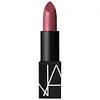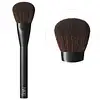What's inside
What's inside
 Key Ingredients
Key Ingredients

No key ingredients
 Benefits
Benefits

No benefits
 Concerns
Concerns

No concerns
 Ingredients Side-by-side
Ingredients Side-by-side

Dimethicone
EmollientSynthetic Wax
AbrasivePolyethylene
AbrasiveIsohexadecane
EmollientHydrogenated Polyisobutene
EmollientDimethicone/Vinyl Dimethicone Crosspolymer
Skin ConditioningMicrocrystalline Wax
Emulsion StabilisingKaolin
AbrasiveEuphorbia Cerifera Wax
Sorbitan Sesquiisostearate
EmulsifyingCetearyl Dimethicone Crosspolymer
Tocopheryl Acetate
AntioxidantPassiflora Edulis Seed Oil
EmollientMoringa Oleifera Seed Oil
EmollientTocopherol
AntioxidantPolysilicone-11
Disteardimonium Hectorite
StabilisingHydroxyapatite
AbrasiveButyrospermum Parkii Butter
Skin ConditioningIsopropyl Titanium Triisostearate
EmollientPropylene Carbonate
SolventSimethicone
EmollientBHT
AntioxidantPhenoxyethanol
PreservativeAroma
Linalool
PerfumingCitronellol
PerfumingLimonene
PerfumingCI 77163
Cosmetic ColorantCI 42090
Cosmetic ColorantCI 77491
Cosmetic ColorantCI 77492
Cosmetic ColorantCI 77499
Cosmetic ColorantMica
Cosmetic ColorantCI 45410
Cosmetic ColorantCI 17200
Cosmetic ColorantCI 15850
Cosmetic ColorantCI 77891
Cosmetic ColorantCI 19140
Cosmetic ColorantCI 15985
Cosmetic ColorantDimethicone, Synthetic Wax, Polyethylene, Isohexadecane, Hydrogenated Polyisobutene, Dimethicone/Vinyl Dimethicone Crosspolymer, Microcrystalline Wax, Kaolin, Euphorbia Cerifera Wax, Sorbitan Sesquiisostearate, Cetearyl Dimethicone Crosspolymer, Tocopheryl Acetate, Passiflora Edulis Seed Oil, Moringa Oleifera Seed Oil, Tocopherol, Polysilicone-11, Disteardimonium Hectorite, Hydroxyapatite, Butyrospermum Parkii Butter, Isopropyl Titanium Triisostearate, Propylene Carbonate, Simethicone, BHT, Phenoxyethanol, Aroma, Linalool, Citronellol, Limonene, CI 77163, CI 42090, CI 77491, CI 77492, CI 77499, Mica, CI 45410, CI 17200, CI 15850, CI 77891, CI 19140, CI 15985